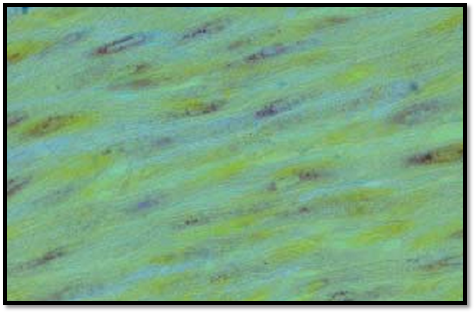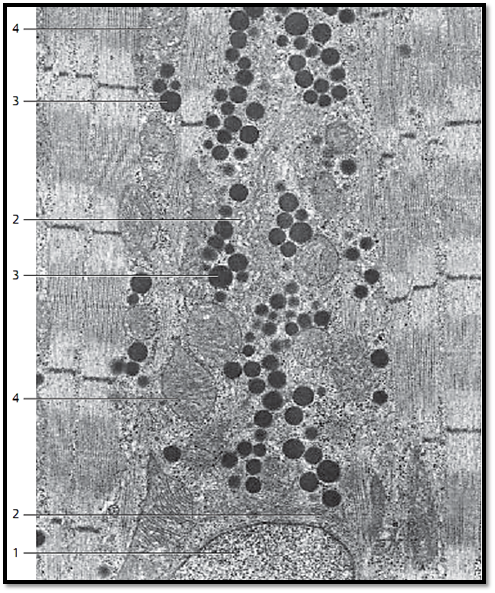
Cardiac Muscle-Myocardium-Myoendocrine Cells from the Right Atrium
 المؤلف:
Kuehnel,W
المؤلف:
Kuehnel,W
 المصدر:
Color Atlas of Cytology, Histology, and Microscopic Anatomy
المصدر:
Color Atlas of Cytology, Histology, and Microscopic Anatomy
 الجزء والصفحة:
الجزء والصفحة:
 27-7-2016
27-7-2016
 1786
1786
Cardiac Muscle-Myocardium-Myoendocrine Cells from the Right Atrium
The cardiomyocytes of the atrium contain osmiophilic granules. These specific granulate d atrial cells execute endocrine functions and are therefore called myoendocrine cells . They secrete the heart polypeptide hormone atrial natriuretic polypeptide (ANP) (also known as cardiodilatin (CDD), cardionatrin and atriopeptin). The hormone plays an important role in the regulation of the blood pressure and the water-electrolyte balance (diuresis natriuresis). This figure shows myoendocrine cells from the atrium dextrum of a pig heart after peroxidase-antiperoxidase staining using an antibody against cardiodilatin. The brown products of these reactions are pre dominantly found in the sarcoplasmic cones of the cells (perinuclear localization ). Farther away from the nucleus, staining is weaker. Myoendocrine cells occur in small numbers also in the ventricular myocardium. There, they are detected along the excitatory tissue in the septum.
Preparation; magnification: × 380

Cardiac Muscle—Myocardium—Myoendocrine Cells from the Right Atrium
Myoendocrine cells have a typical morphology. The endocrine secretor y apparatus, for example, exists only in the Golgi region in or close to the sarcoplasmic cones 1 , which is rich in sarcoplasm and poor in myofibrils. Golgi complexes 2 can be located either close to or further away from the nucleus. Secretor y granules 3 occur mainly in the Golgi regions, but sporadically there are also secretor y granules in the rest of the cytoplasm. They often form lines of vesicles in the space between fibrils. The secretory granules contain antigens, which react with antibody to cardiodilatin.
Note the crista-type mitochondria 4 . Left and right in the figure are typical striate d myofibrils.
1 Nucleus of a myoendocrine cell
2 Golgi complex (Golgi apparatus)
3 Secretor y granules
4 Mitochondria
Electron microscopy; magnification: × 11 000

References
Kuehnel, W.(2003). Color Atlas of Cytology, Histology, and Microscopic Anatomy. 4th edition . Institute of Anatomy Universitätzu Luebeck Luebeck, Germany . Thieme Stuttgar t · New York .
 الاكثر قراءة في علم الخلية
الاكثر قراءة في علم الخلية
 اخر الاخبار
اخر الاخبار
اخبار العتبة العباسية المقدسة


